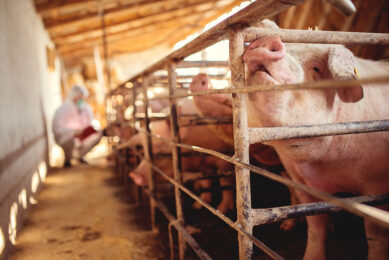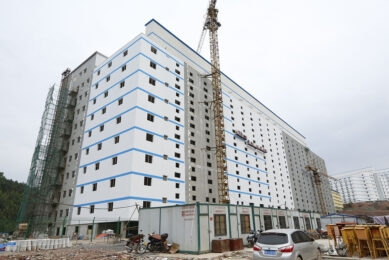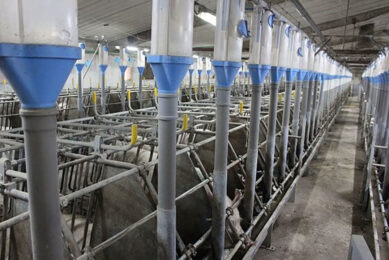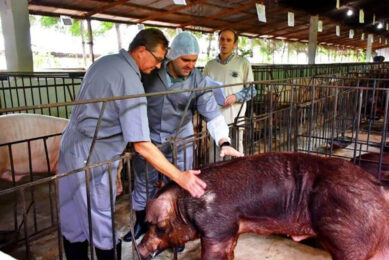A pig farm of a new Russian generation
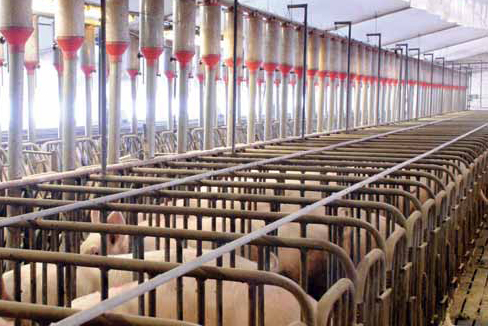
The Russians call it a farm of the new generation – how pig production happened in the past is forgotten. Economies of scale, several locations, a dedicated staff and excellent growth rates make the ‘Selectiono-Gybridnii Centr’, near Voronezh, Russian Federation, stand out from the rest.
The agricultural heart of the Russian Federation, an area in the mid-south of the country, is known as Chernozem or the ‘Black Earth’ Region. This is where the soil is most fertile, where the climate is most favourable for major grain crop cultivation, and where more than half of the country’s pig stock is concentrated. Away from major routes, the farm Selectiono-Gybridnii Centr can be found – Russian for ‘Selection and Hybrid Centre’. Located 500 km south of Moscow, it is only 200 km away from Voronezh, the centre of the Black Earth Region.
In Russia, farms like these are called ‘companies of the new generation’. Even though farm director Natalia Kozmina says that this farm is just like all others – one look at the farm’s appearance suffices to understand that this is not a traditional Russian pig farm. No dilapidated buildings here, no Soviet production systems, no lack of discipline or unsanitary conditions – let’s take a look what the new generation brought to Russia.
History
The farm was founded as a greenfield farm in February 2007 when 800 pigs and 30 boars of three breeds were brought in: Large White, Landrace and Duroc. The farm consists of several locations – and altogether holds about 50,000 pigs at five different farm complexes.
Two years ago, the company began working with an American selection programme analysing the health and genetics of the herd, as well as monitoring the pigs’ growth rates. This happens under the direction of Livestock Research Institute in Moscow with the special guidance of Agricultural Science candidate Natalia Zinovyeva. The farm also owns a supporting unit, where it stores its feed and has its machine and tractor station used to harvest the crops.
In addition, it houses the farm’s Centre for Genetic Advancement, as well as the feed mill. Altogether, these elements allow the company to create a closed production cycle. And if anything is important in the Russian pork production industry, it is to be independent from anyone. In particular in relation to feed this is important, as on the market often exorbitant prices are being asked for feed. The farm does not only produce pork for sale, but also sells pigs to neighbouring farms and agricultural holdings to improve their herd genetics.
How it works
The company is different from traditional Russian farms as its founders focused primarily on international experience during construction.
Natalia Kozmina, farm director, says, “From the many trips to European and North American farms, I have concluded that genetics are almost always the same, the focus between farms, however, is different. For some farms, the pigs’ constitution is key, for others it is bacon thickness, at a third it is sow prolificacy, and so on. We realised, however, that without a healthy herd we cannot realise the full potential of pigs. We think that on the Russian market there is a great demand for this. We can meet it, and that will guarantee that our business will be successful. Right from the start we decided that we should not build large Russian-style farm buildings. A complex for 1,000 breeding sows with a closed production cycle would provide the best opportunity.”She continues, “The main difference between us and competitors is that we are working in compliance with the most modern recommendations of the Russian main agricultural institutes.
Therefore Average Daily Gain (ADG) during fattening is from 970 g up to 1 kg. It is certainly possible to achieve a higher performance, but this way the quality of pork will definitely be lost.“We produce all our feeds ourselves except the piglet feeds, which we get directly from manufacturers in Germany. Currently we are the only pig farm in Russia working with the US monitoring programme without foreign interference.”The farm management plans to build and open two new pork production facilities every year. The population of each one will be about 1,000 sows and a capacity of 12,000 pigs in total. This will lead to an increase of production levels by 50% every year.
In the coming years, the farm management aims to reach a figure of 15,000 sows.Kozmina says, “It is obvious that the weakest point in Russian pork production is herd health. That is only exacerbated by the fact that it is virtually impossible to import herds from overseas. We are among the farms trying to deal with this problem. These days, the demand for a healthy herd on the Russian market is very high, so we have our own niche.”She adds, “Our breeding pigs today grow throughout Russia and even in some neighbouring countries. We are selling our pigs to complexes such as Top Agro, Belgrankorm, Agrokolos, Agroalyans, Trinity and others – about two dozen of large customers in total. We also continue to work closely with all academic institutions in our country to further improve our animals’ genetics.”
The ASF problem
African Swine Fever (ASF) has become a very serious problem in recent years for the pork production industry in Russia. In the autumn of 2011, first outbreaks were reported in the Black Earth Region. One outbreak occurred in the Voronezh region, just 140 km away from the Selectiono-Gybridnii Centr.
Kozmina says her farm did not take any additional protective measures against the dangerous virus, as security was already very high. There was nothing additional to do, she says: “For example, it is forbidden for any unauthorised person or vehicle to enter the grounds of the organisation. Even the workers can only access the farm through a special disinfection process. They have to remove all clothes, take a shower and wear special clothes again – only then can they begin to fulfil their duties. Workers are also forbidden to keep pigs at their own homes – and they cannot bring any food or feed onto the complex. Instead, for employees there is a special cafeteria on the complex.”She continues, “In each farm building there is a climate control system. Everything reaching the production cycle from outside must have passed through a sanitary room. Thus, the possibility of acquiring viruses from the outside, has completely been eliminated. If every farm in Russia would take similar measures, we would be able to stop the spread of ASF relatively quickly.”
Kozmina adds, “We almost do not work with antibiotics, but spend a lot of money on disinfectants. Our main rule is: Prevention is better than cure.”
Non-routine decision
The traditional problem of Russian agriculture is a shortage of qualified staff – and this farm could not evade this problem. Usually, the selection of personnel on new farms is a long procedure, taking years.With some creativity, the farm management went to the Voronezh State Agricultural University three years ago, which is the largest agricultural school in the Black Earth Region. They simply formally invited half of the graduate students to come to work at the farm. Many of them did this – and got housing, decent wages and interesting work. Currently there are about 650-700 employees on the farm. PP



